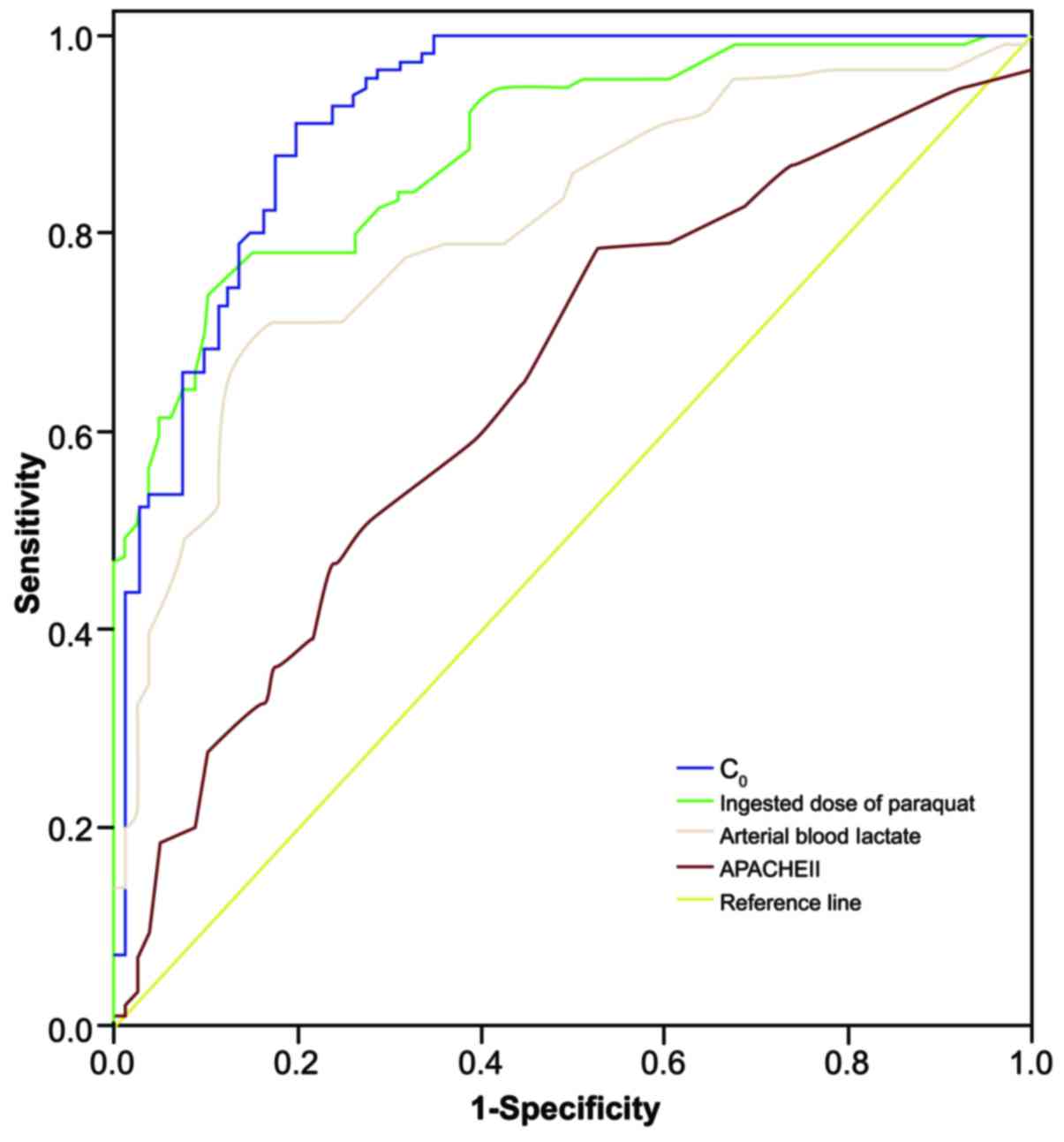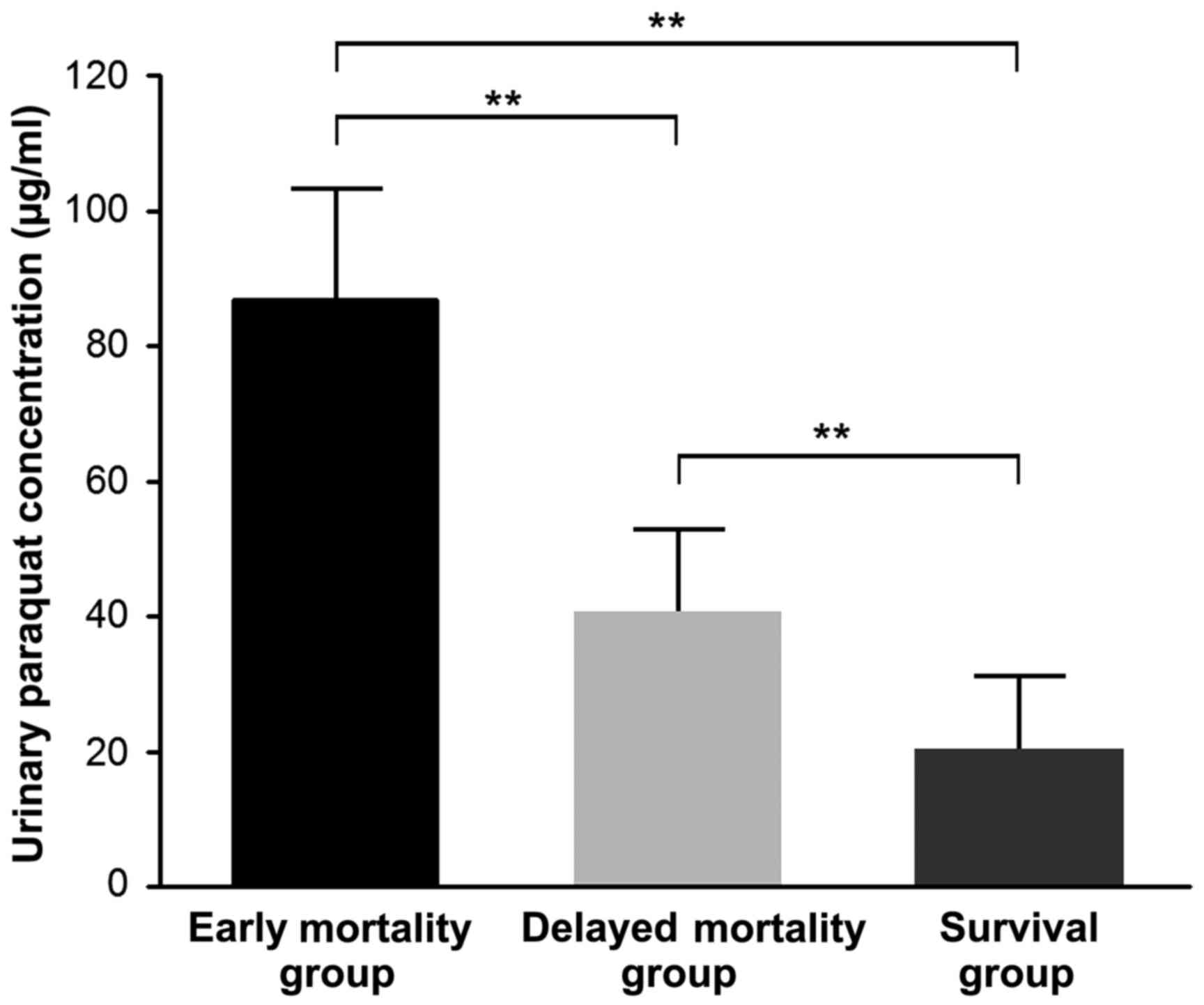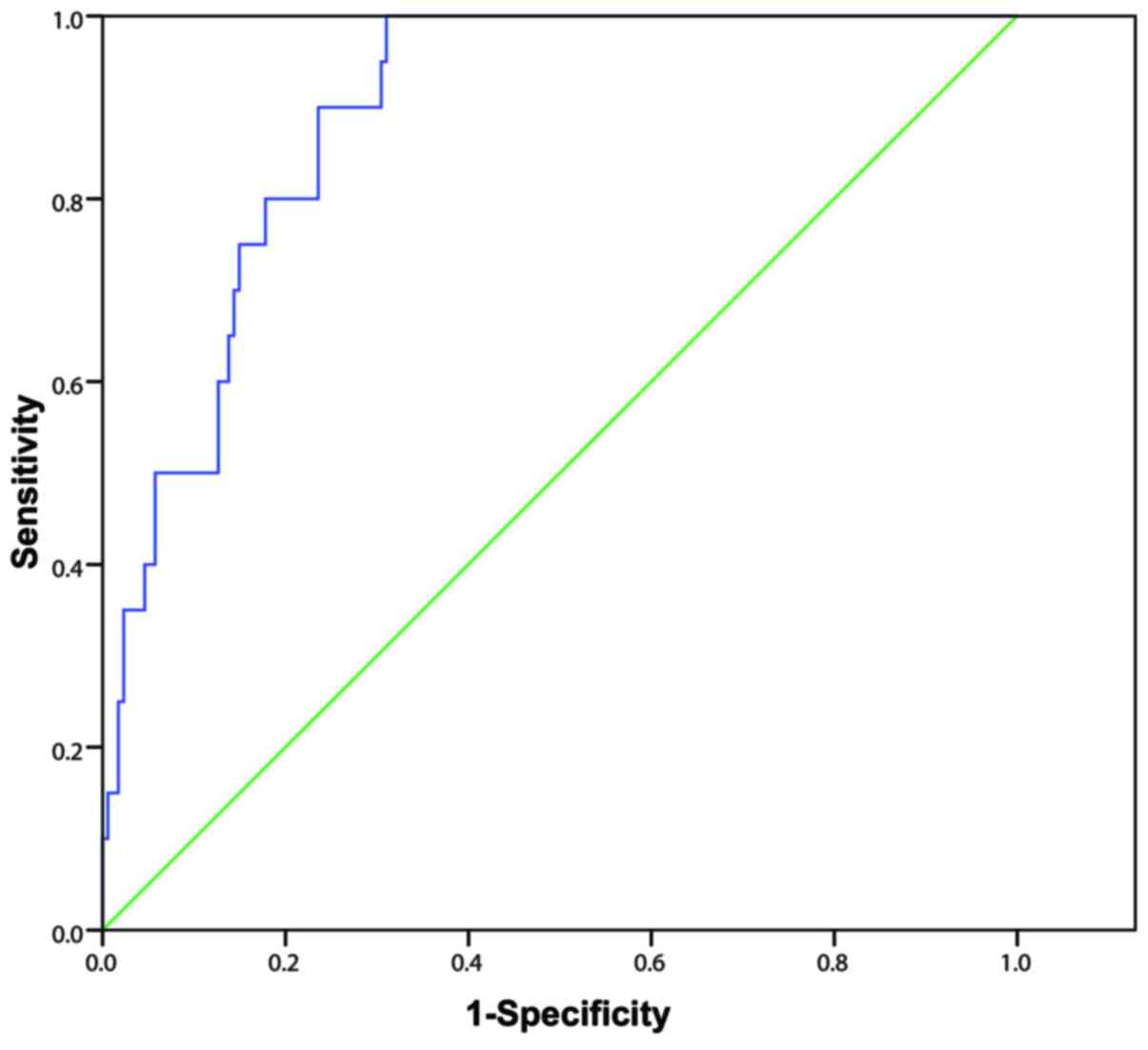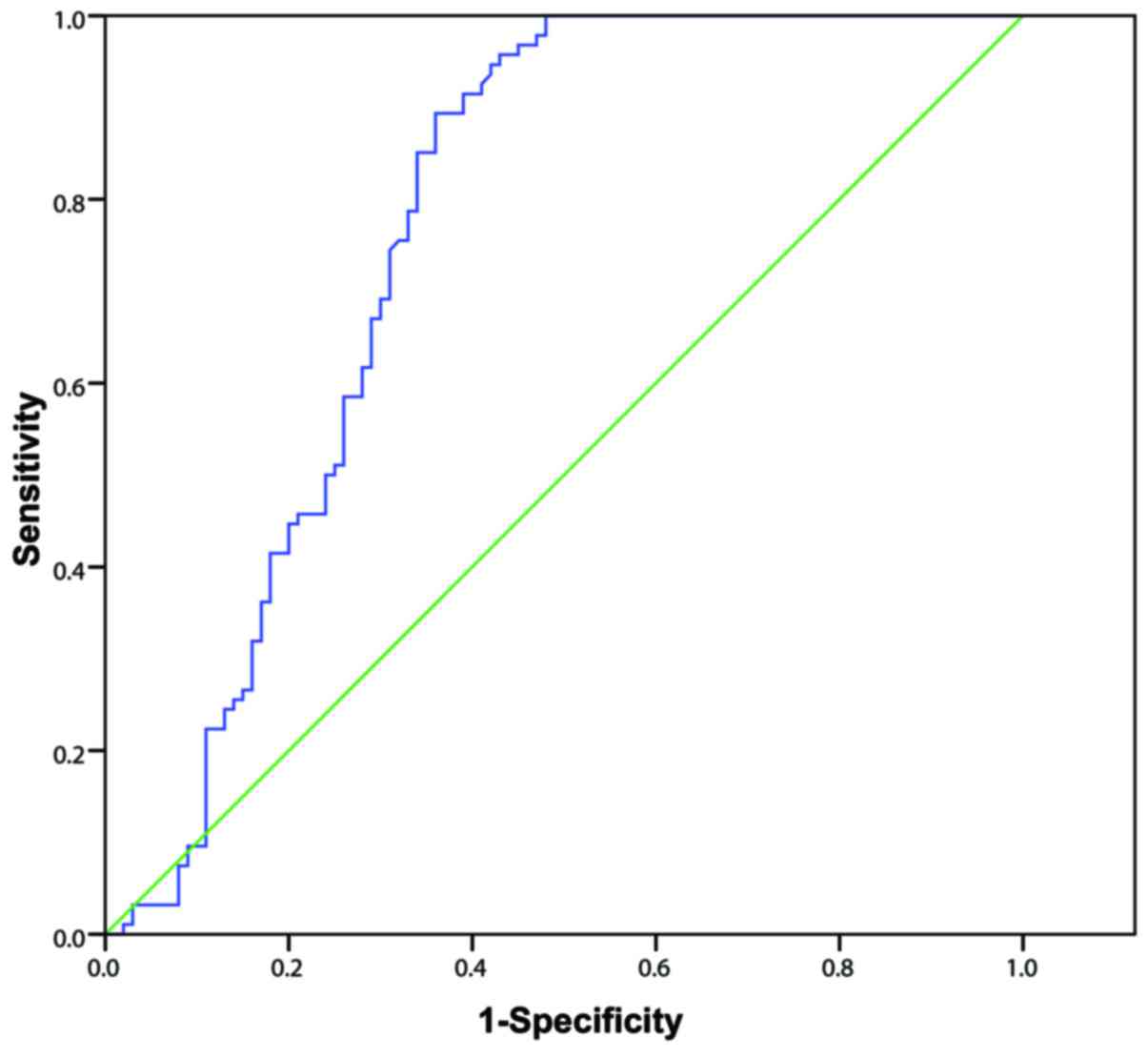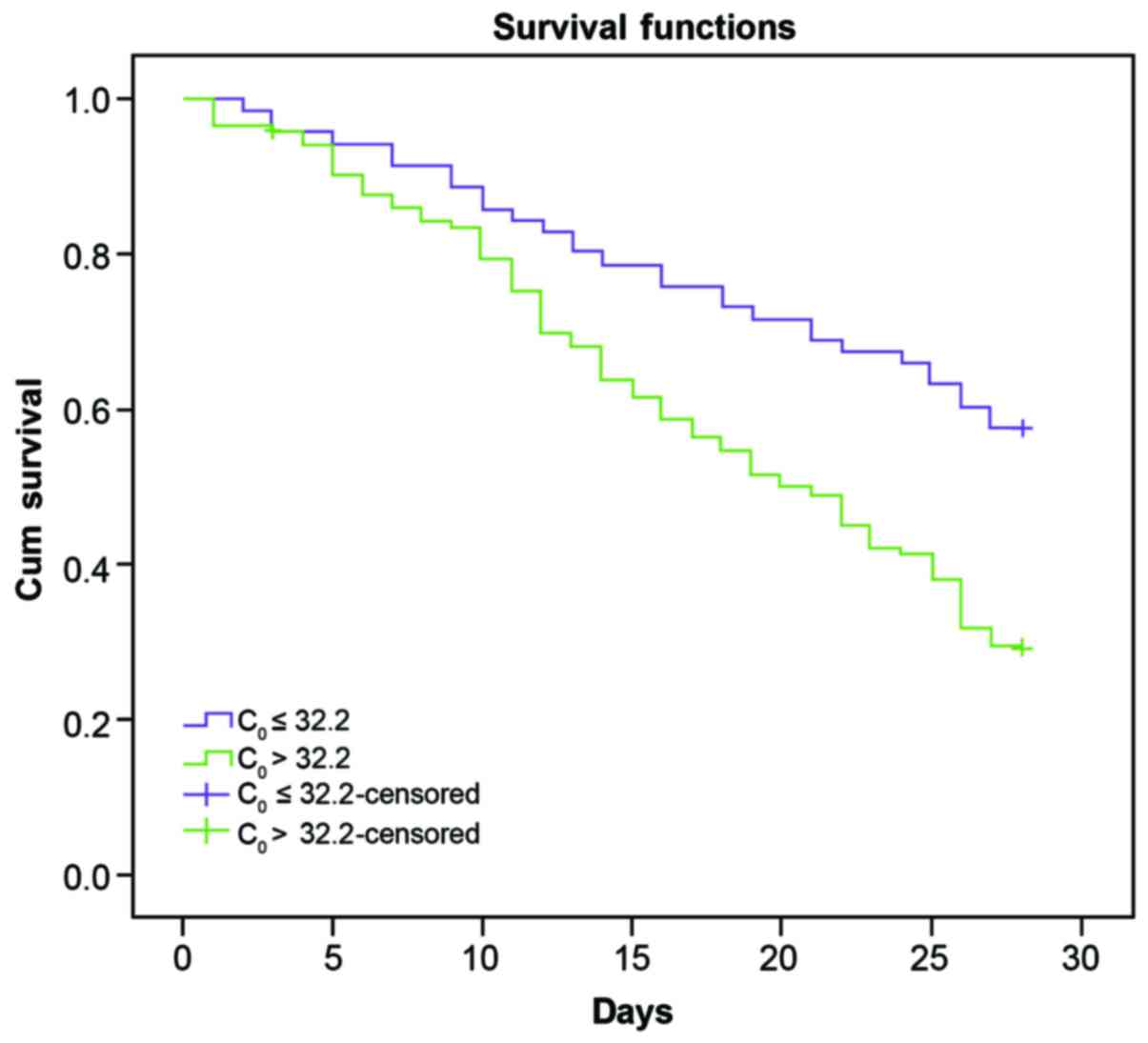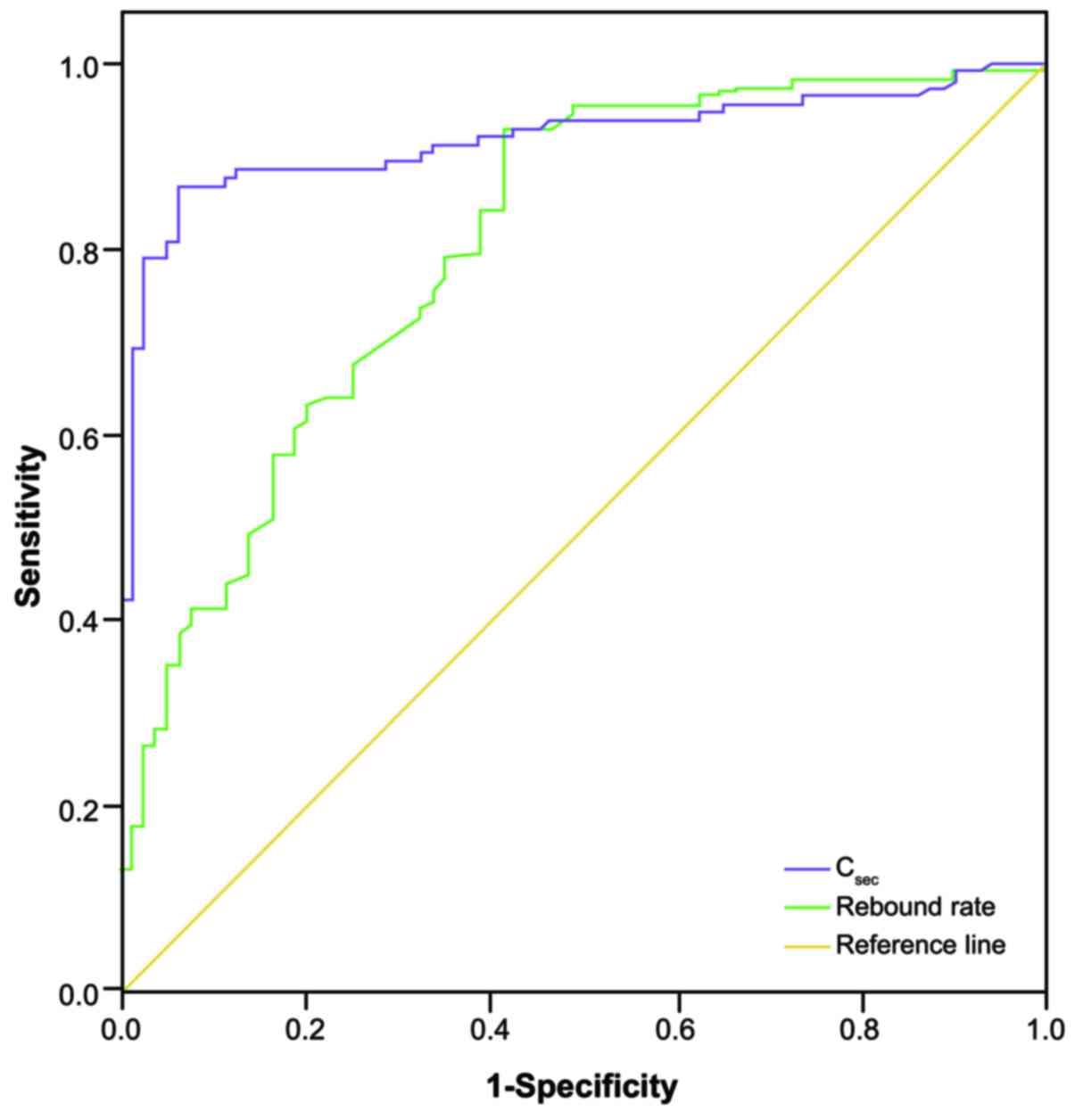Predictive values of urine paraquat concentration, dose of poison, arterial blood lactate and APACHE II score in the prognosis of patients with acute paraquat poisoning
- Authors:
- Published online on: May 17, 2017 https://doi.org/10.3892/etm.2017.4463
- Pages: 79-86
-
Copyright: © Liu et al. This is an open access article distributed under the terms of Creative Commons Attribution License.
Metrics: Total
Views: 0 (Spandidos Publications: | PMC Statistics: )
Total PDF Downloads: 0 (Spandidos Publications: | PMC Statistics: )
Abstract
The present study investigated the predictive values of urine paraquat (PQ) concentration, dose of poison, arterial blood lactate and Acute Physiology and Chronic Health Evaluation (APACHE) II score in the prognosis of patients with acute PQ poisoning. A total of 194 patients with acute PQ poisoning, hospitalized between April 2012 and January 2014 at the First Affiliated Hospital of P.R. China Medical University (Shenyang, China), were selected and divided into survival and mortality groups. Logistic regression analysis, receiver operator characteristic (ROC) curve analysis and Kaplan‑Meier curve were applied to evaluate the values of urine paraquat (PQ) concentration, dose of poison, arterial blood lactate and (APACHE) II score for predicting the prognosis of patients with acute PQ poisoning. Initial urine PQ concentration (C0), dose of poison, arterial blood lactate and APACHE II score of patients in the mortality group were significantly higher compared with the survival group (all P<0.05). Logistic regression analysis revealed that C0, dose of poison and arterial blood lactate correlated with mortality risk of acute PQ poisoning (all P<0.05). ROC curve analysis suggested that the areas under the curve (AUC) values of C0, dose of poison, arterial blood lactate and APACHE II score in predicting the mortality of patients within 28 days were 0.921, 0.887, 0.808 and 0.648, respectively. The AUC of C0 for predicting early and delayed mortality were 0.890 and 0.764, respectively. The AUC values of urine paraquat concentration the day after poisoning (Csec) and the rebound rate of urine paraquat concentration in predicting the mortality of patients within 28 days were 0.919 and 0.805, respectively. The 28‑day survival rate of patients with C0 ≤32.2 µg/ml (42/71; 59.2%) was significantly higher when compared with patients with C0 >32.2 µg/ml (38/123; 30.9%). These results suggest that the initial urine PQ concentration may be the optimal index for predicting the prognosis of patients with acute PQ poisoning. Additionally, dose of poison, arterial blood lactate, Csec and rebound rate also have referential significance.



